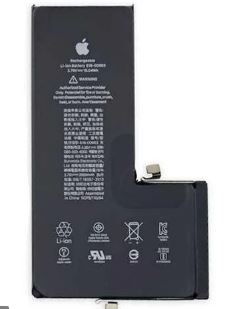The phone’s battery is an energy storage device. When the battery runs out of power, you can recharge it from an electrical outlet or other USB source. The ports in computers can also do this. In smartphones, the batteries are made non-replaceable. The battery is glued inside the phone to the case or electrical board, this is done to secure the battery and avoids damage to the internal cells if the phone falls. This way of installing the battery makes the phone safe to use, but very difficult to repair. Batteries can take quite interesting forms, for example in the iPhone 11 PRO MAX, the battery is not just a black rectangle.

How a smartphone battery works from the user’s perspective
Let’s look at modern phones, you bought a new phone, its charge (example) is enough to work the phone for two days. In the morning you take the phone with 100% charge to the evening remains 50% of the charge. A year later you notice that the phone has 20% of its charge by the evening. You think it’s probably a battery problem, it’s not always the case, but the battery is getting older too.
The life of modern batteries in phones
The maximum life of the phone battery is about 7 years, during which time the battery loses about 50% of its capacity. The average battery life is between 3 and 5 years. Special materials are used to make the batteries, the most common are lithium-ion materials. These materials are the most suitable for use in telephones. They are airtight and safe if properly manufactured. On average, a phone battery can withstand up to 1000 charging cycles.
Factors that affect the life of your phone battery.
- Whatever you say about the life of your phone’s battery, the quality of workmanship is very important and if your battery is made of quality materials, it will last much longer. Phone manufacturers are responsible for the quality, taking into account the stated warranty period of the phone including the battery, which is 1-2 years. The manufacturer can install a battery of any quality in the phone, 99% of the batteries in the phones work during the warranty period without any comments.
- Intensity of phone usage, the more times you charge your phone the more the battery wears out.
- Battery manufacture date, every year the battery loses its properties even when not in use. On average, this is about 5% of the capacity every year. If you have been using your phone for 2 years, the battery capacity has already been reduced by around 10%.
- Turbocharging, some phones have a quick charge mode. With this type of charging, the battery is charged with high currents. It recharges very quickly, but it’s bad for the battery. Also for faster charging, they now use charging with a charging current of 2 amps, which also reduces the life of the battery. You can charge your phone with a ns current of 1 ampere, it will prolong the life of the battery, but it is not convenient. Charging your phone for 3-4 hours is a very long time and will irritate the phone owner.

How to extend the life of your phone’s battery
It is virtually impossible and unnecessary to extend the battery life during normal use. But if you follow some guidelines, your phone’s battery will last a little longer. Given the rate of development and improvement of phones after 2-3 years, the phone becomes obsolete and you have to change it.
Recommendations for extending the life of your phone’s battery
If you want to try to extend the life of your phone battery. Only one thing to recommend is that you charge your phone less. This can only be achieved if you meet the following conditions.
- Use the Auto Brightness Control screen.
- Do not leave programs in the background that you do not need or use.
- Turn off the turbocharging on your phone (if available)
- Turn it off if you don’t need geolocation, Bluetooth.
But even if fulfilling all the recommendations will extend the life of your phone’s battery for a short time, natural battery ageing has a greater impact than other factors.






